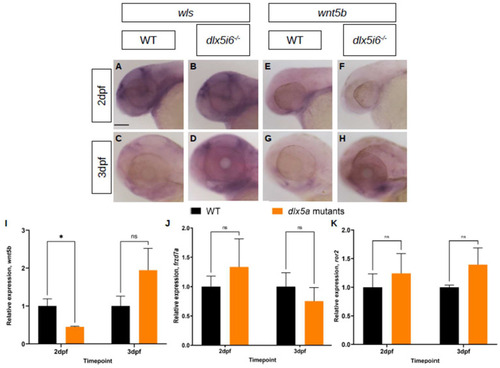- Title
-
Loss of dlx5a/dlx6a Locus Alters Non-Canonical Wnt Signaling and Meckel's Cartilage Morphology
- Authors
- Yu, E.P.Y., Saxena, V., Perin, S., Ekker, M.
- Source
- Full text @ Biomolecules
|
Histological analysis of |
|
Alcian blue and alizarin red staining of 14 dpf |
|
NCC specification and migration does not appear to be affected in |
|
Proliferation is increased in |
|
Expression of chondrocyte markers at 3 dpf in |
|
Expression of non-canonical Wnt signaling components are altered in |
|
Decreased LW ratio of MC and mispositioning of microtubule organizing center (MTOC) in |







